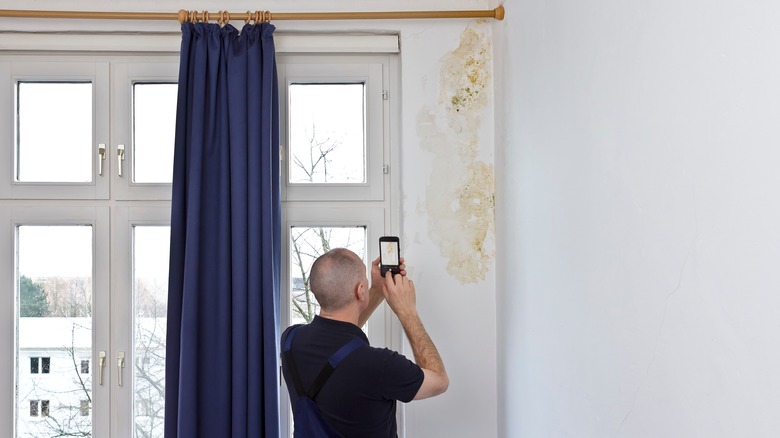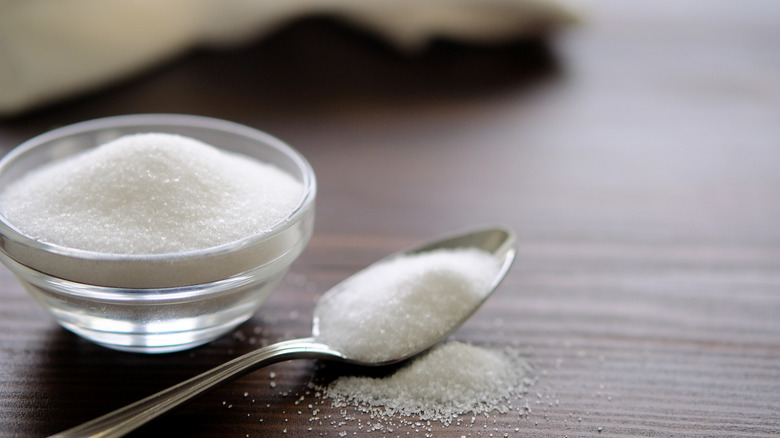The Salt Hack People Are Using To Combat Mold In Homes (& Does It Actually Work?)
If you've dealt with mold before, you know these powdery loafers enjoy curating unsightly horror shows without the slightest regard for the effort you take to ensure your space is always spotless and fresh. Unfortunately, mold doesn't just wreak havoc on the aesthetic appeal of your home — though that would be bad enough. This nasty fungal foam is known to trigger allergies, cause a long list of respiratory problems, and create ruinous stains on interior surfaces. The worst part is that mold is annoyingly stubborn. The most harmful fluids on the free market may eliminate it for a few days, only to bounce back, this time more tangled, fuzzy, and exuberant.
Are there any effective DIY ways to remove mold in and around your home? Yes, including a salt hack that folks in the U.K. are being urged to try (via IFL Science). It involves placing bowls of salt next to the window, especially as winter approaches in all its damp and grey glory. Does it actually work? Well, table salt is hygroscopic, meaning it can absorb moisture from the environment. Let's see what this has to do with mold — and whether it's a surefire remedy for one of nature's most stubborn organisms.
Does placing bowls of salt next to the window combat mold in the home?
As just mentioned, table salt attracts moisture. This is because it contains impurities such as magnesium chloride and calcium chloride. Tentatively, this is an impressive property when dealing with mold since mold thrives in moist environments. The thing is, without moisture, mold spores won't grow. The problem of moisture on walls and windows can be narrowed down to condensation. What happens is that tiny clumps of water form on surfaces when warm, humid air encounters a cold surface, making it quickly cool and condense. The secret with table salt is that it can draw moisture from the warm, humid air, so when this warm air eventually meets a cold surface, it will be dry and free of moisture and hence, won't condense to form droplets of water.
On the face of it, anything that removes moisture from the immediate environment should be excellent at combating mold. However, there are other things to consider. One thing to consider is that salt often starts to absorb water at high humidity, typically 74%. This means if the moisture level in your immediate environment is less than 74%, and you're using salt to draw it out, your chances of success will be pretty slim. Consequently — because the salt does not draw moisture out — moisture will still condense when it encounters a cold surface, form droplets, and incubate mold. It's worth noting that relative humidity higher than 60% may result in condensation. So, yes. A salt bowl can help prevent mold — but its effectiveness is a bit limited.

